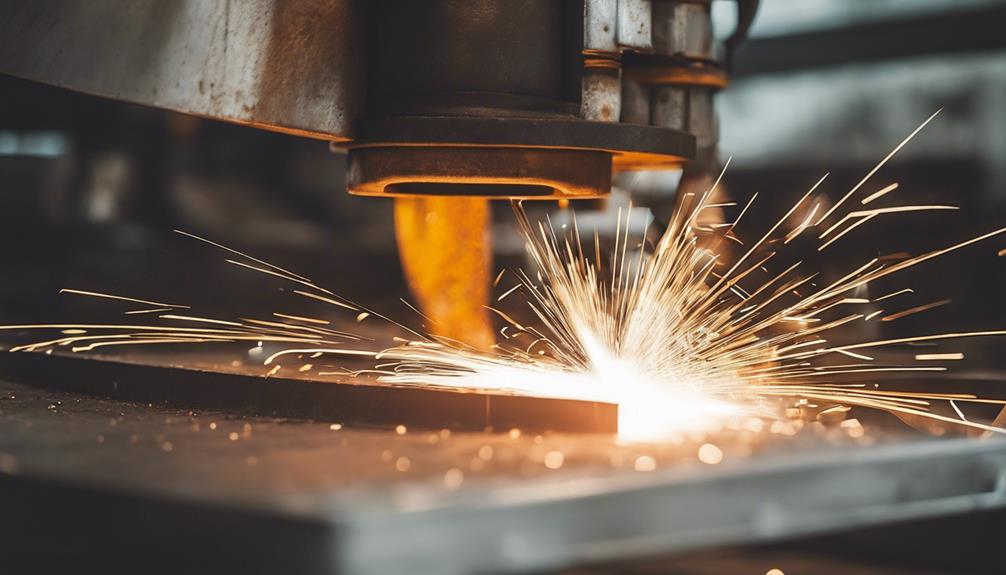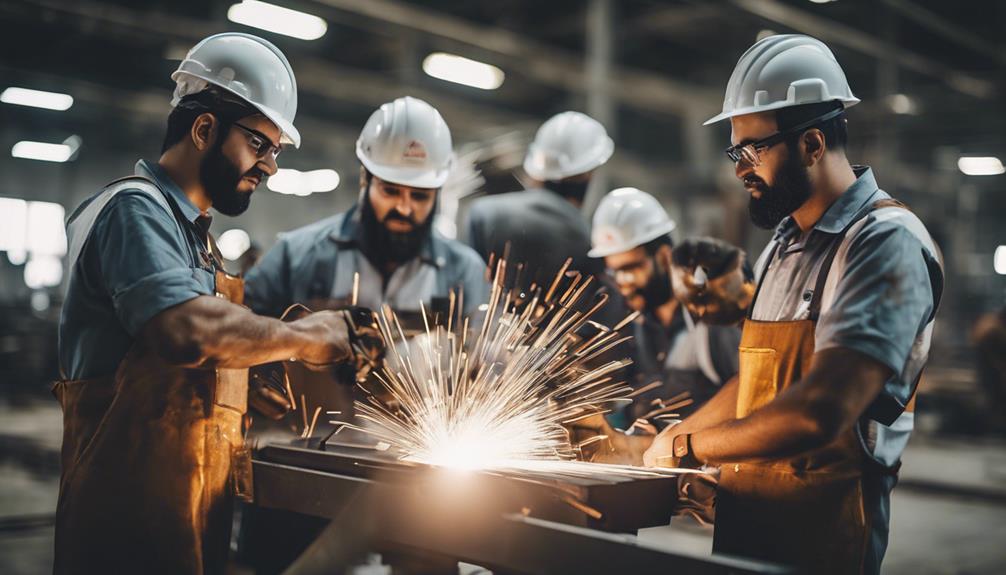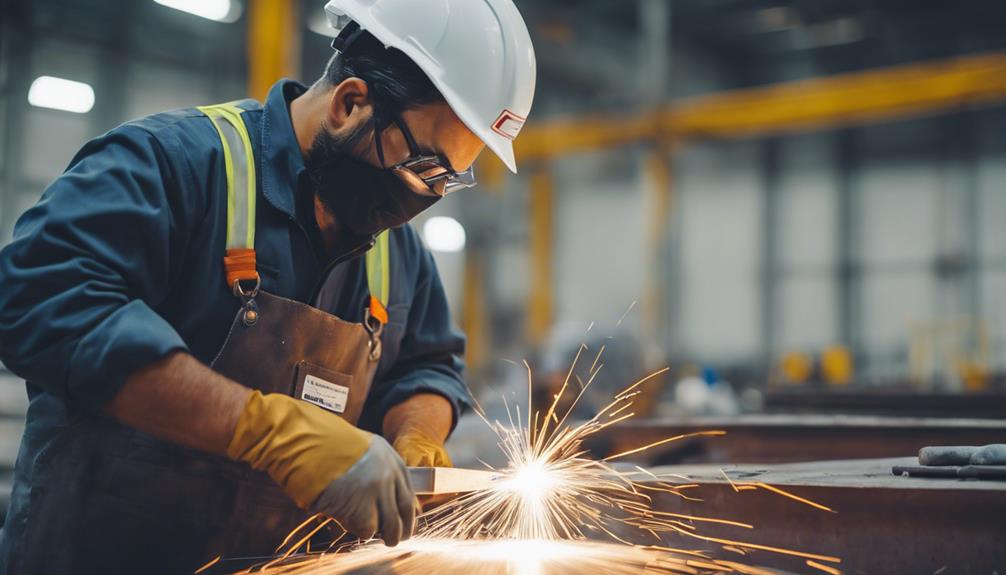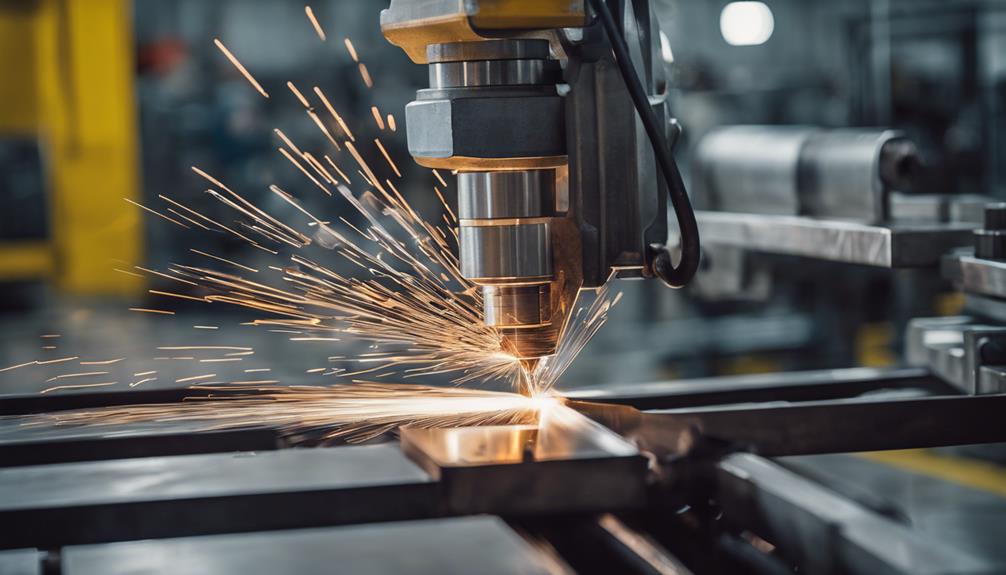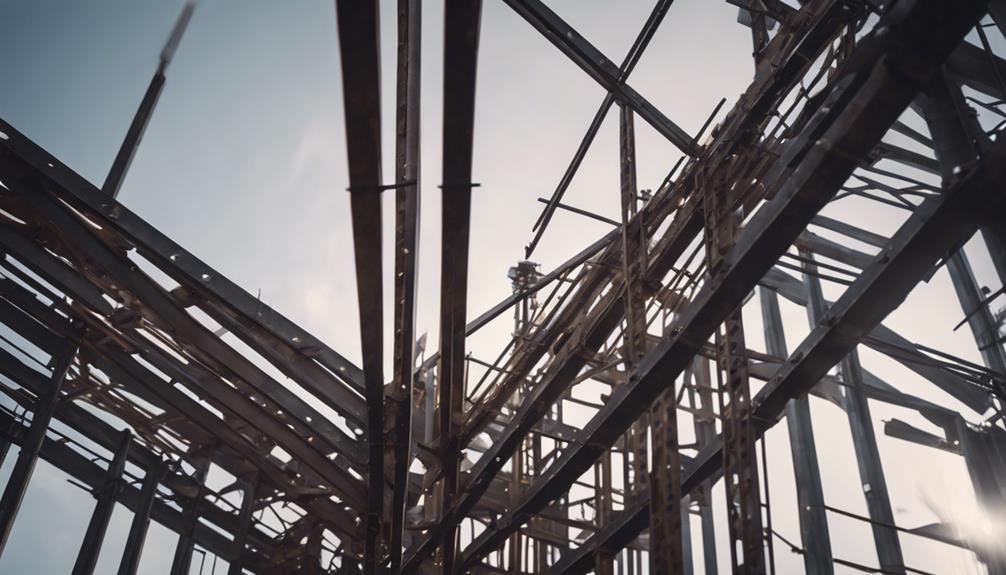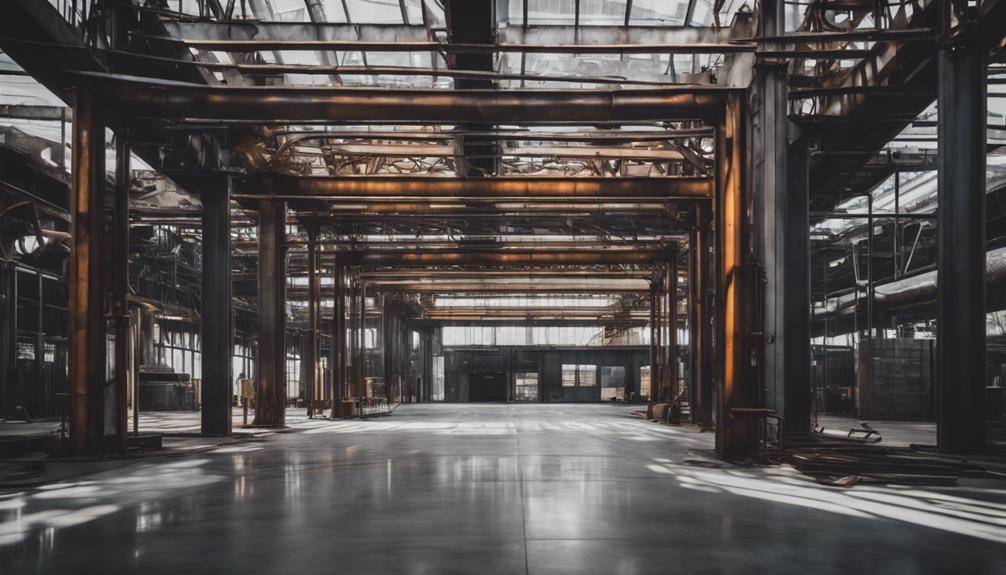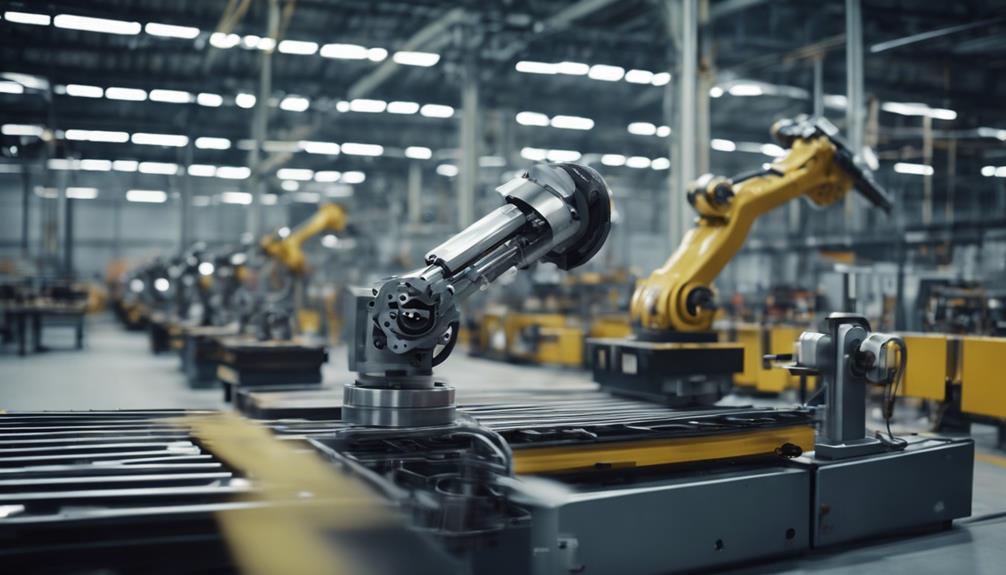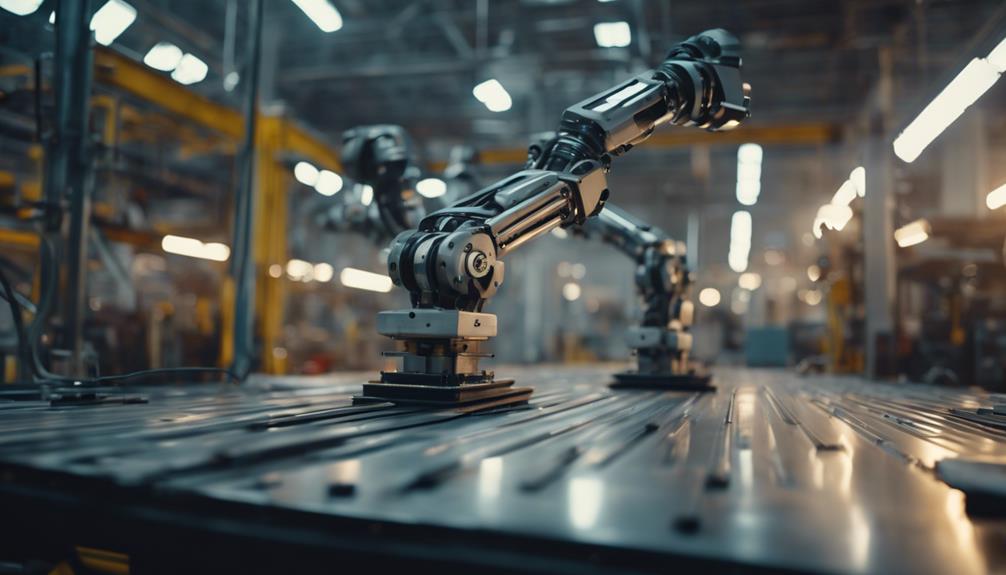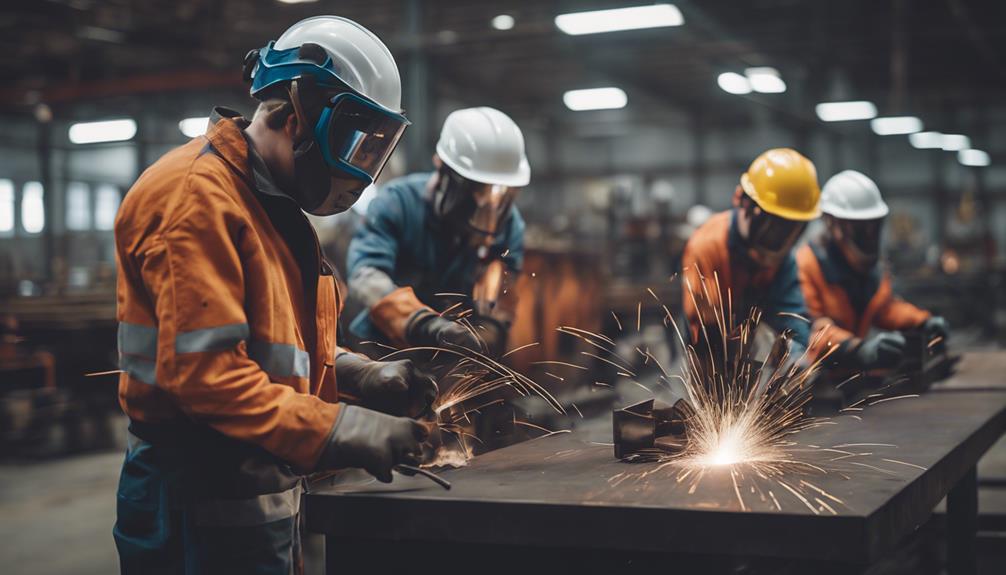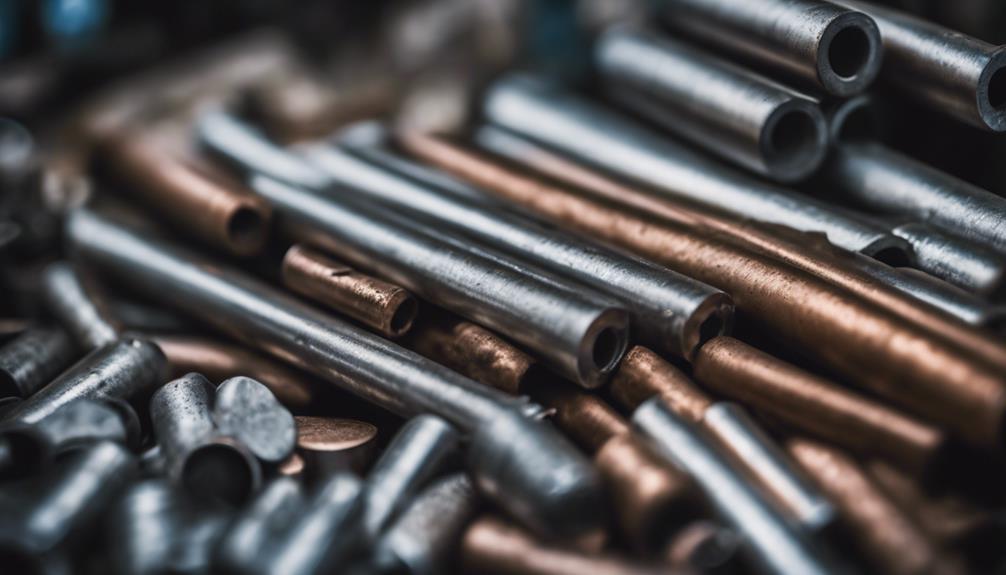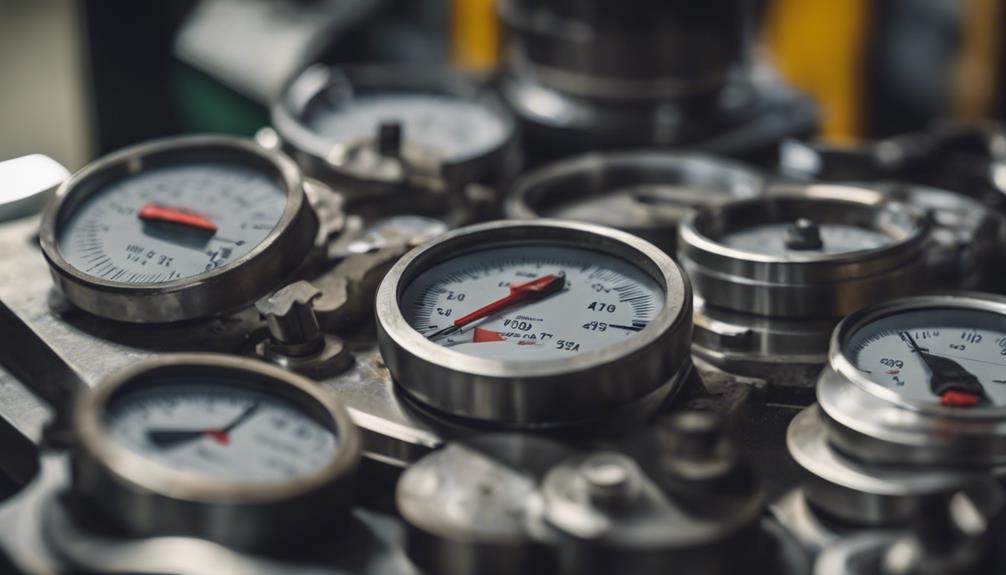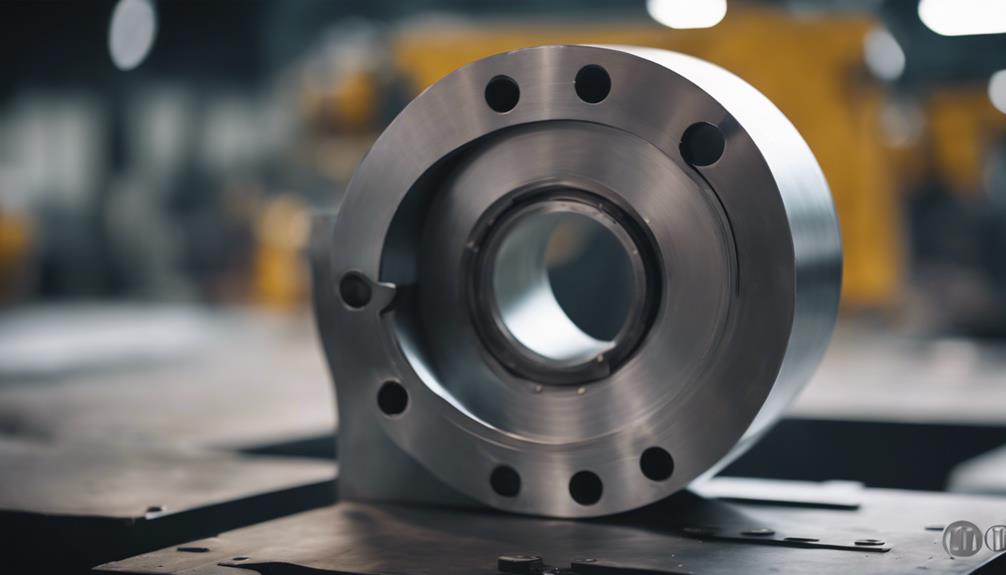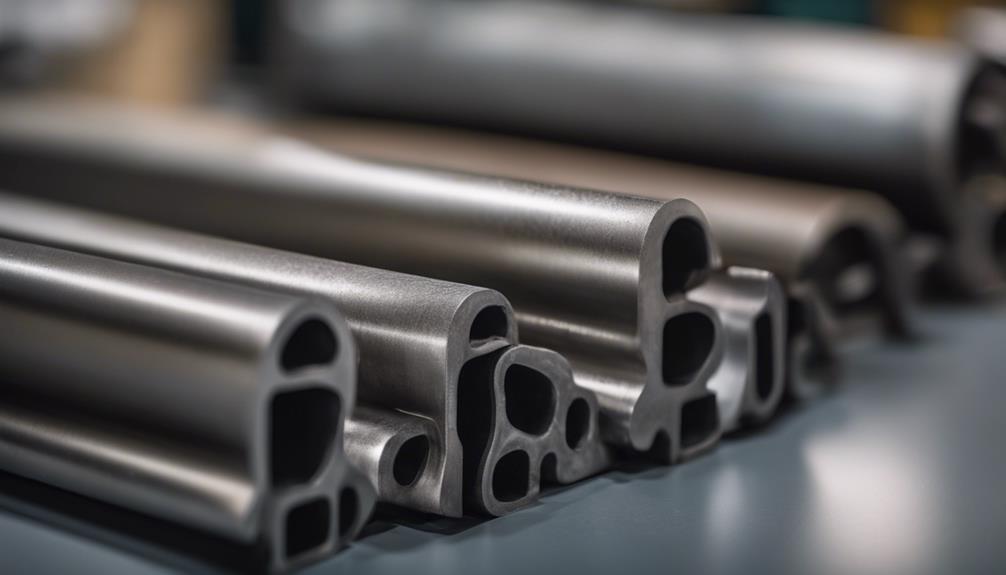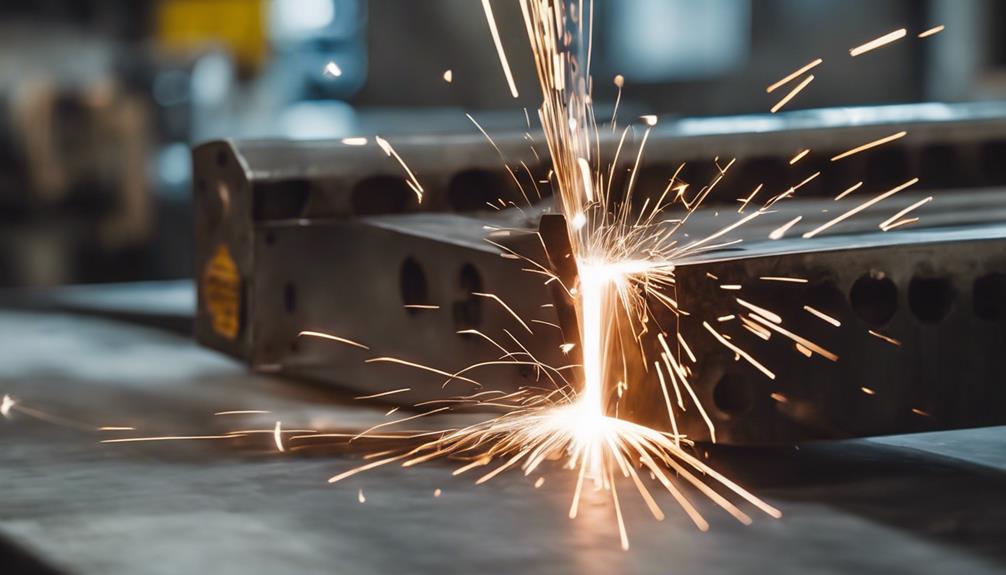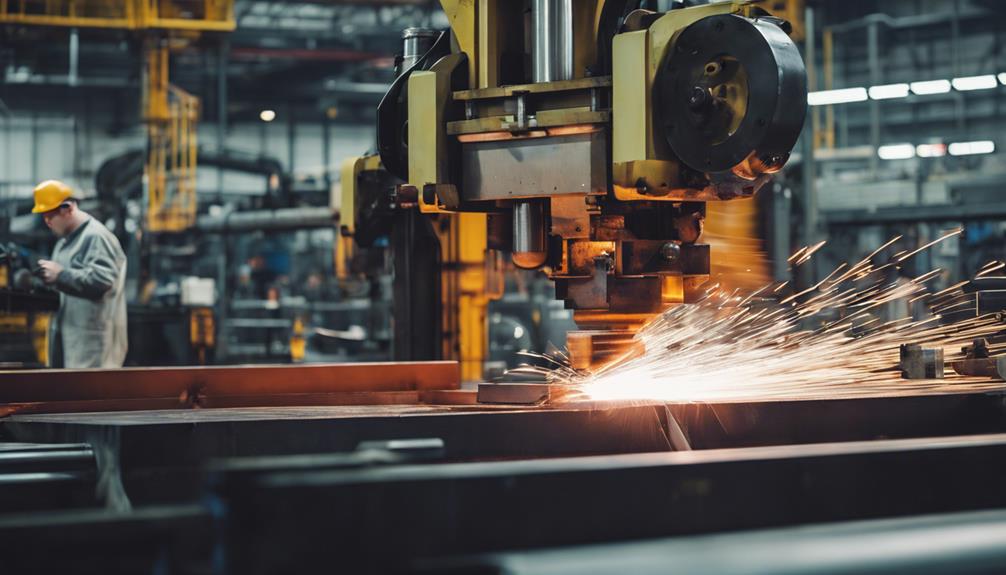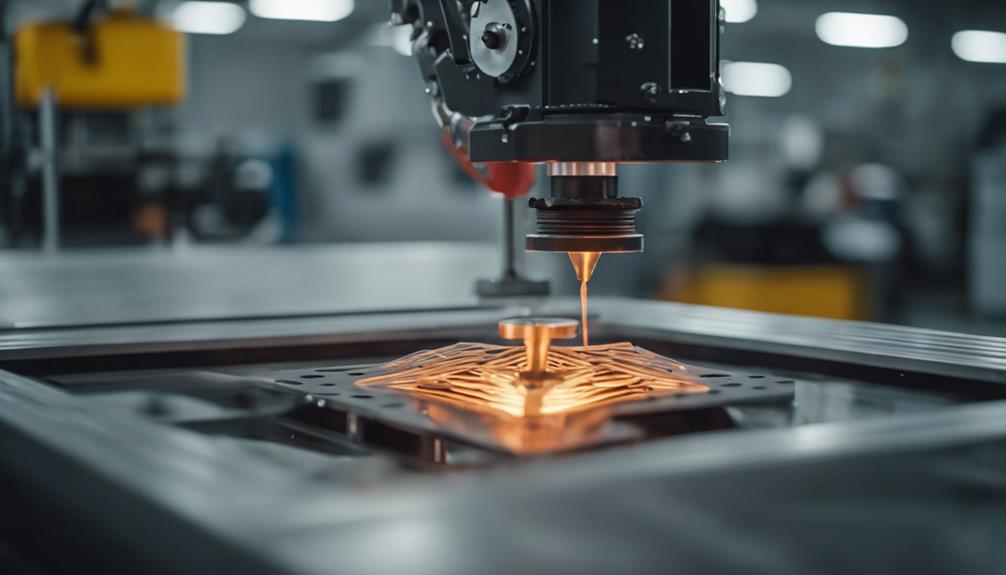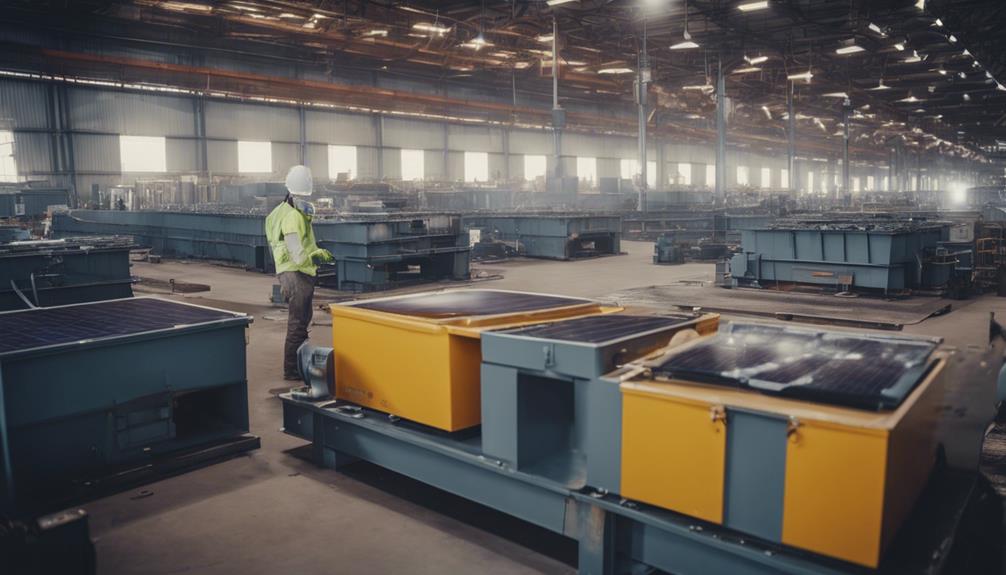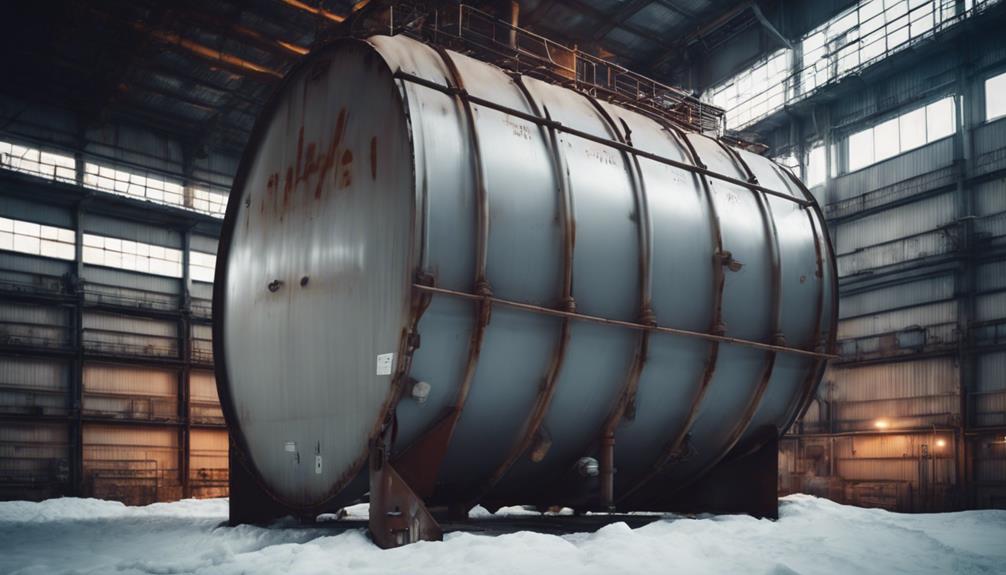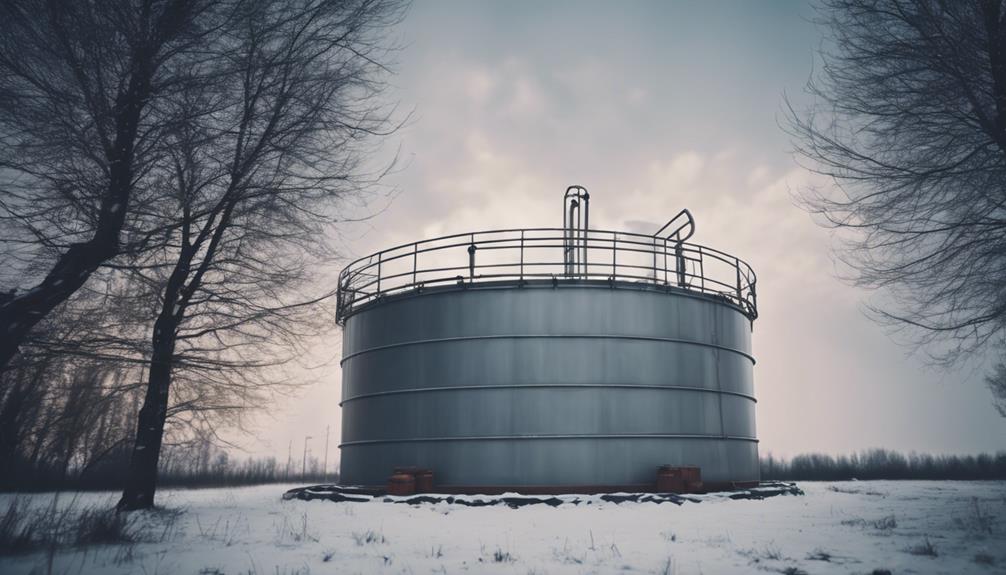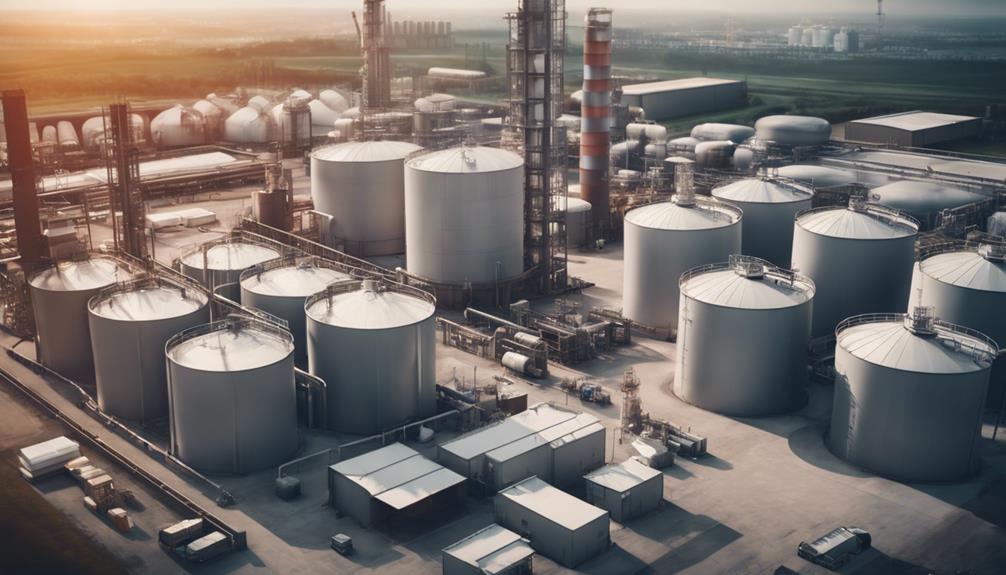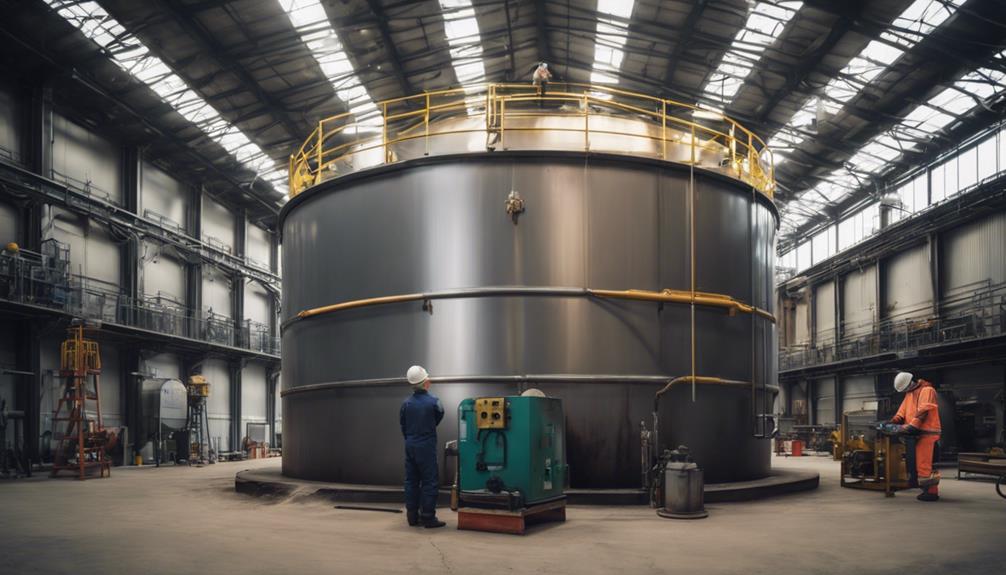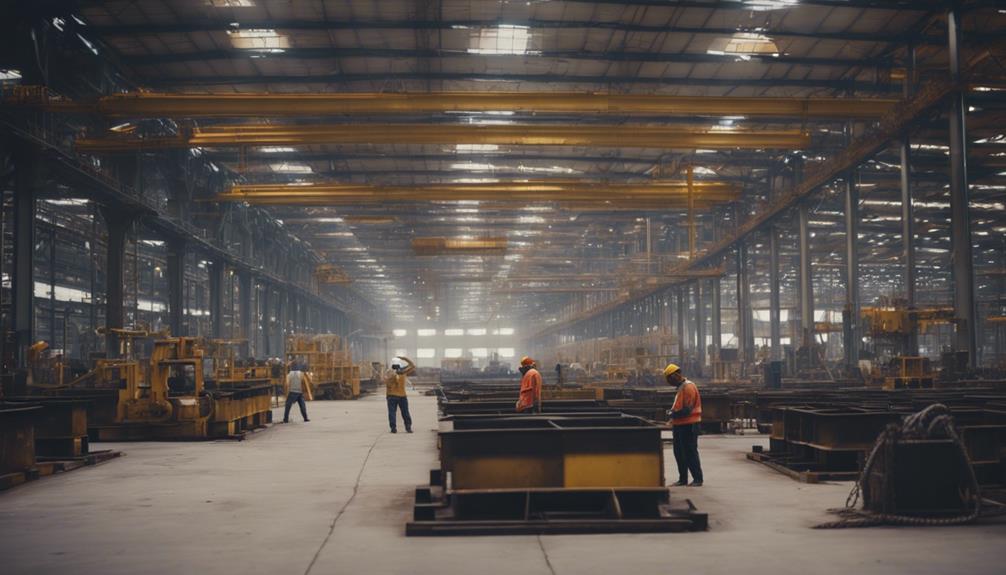
by Abdullah | Jun 11, 2024 | Steel Fabrication
Afco Steel in Jeddah stands out for its unwavering commitment to precision, quality, and innovation in the steel fabrication industry. With a reputation for delivering cutting-edge solutions and meeting stringent industry standards, Afco Steel has become a pivotal player in the region’s steel fabrication landscape.
From intricate industrial projects to large-scale infrastructure developments, the expertise and capabilities offered by Afco Steel continue to redefine the possibilities within the sector, attracting attention and admiration from both local and international stakeholders.
Services Offered
Afco Steel in Jeddah offers a comprehensive range of services tailored to meet the specific needs of the infrastructure and building sectors. Specializing in industrial steel fabrications, Afco Steel caters to clients requiring bulk materials for their projects. Their services include designing, engineering, detailed fabrication, and erection of steel structures necessary for various industrial applications.
Additionally, Afco Steel provides technical training and services for repair, rewind, testing, commissioning, operation, maintenance, and calibration of industrial equipment. Emphasizing precision and quality, Afco Steel ensures high-quality steel fabrication services that meet industry standards.
Renowned for their reliable deliveries, competitive pricing, and commitment to tight construction schedules, Afco Steel is the preferred partner for clients seeking dependable solutions for their steel structure requirements.
The services offered by Afco Steel play a vital role in supporting industrial infrastructure development in the region.
Specializations
Specializing in steel structure fabrication, Afco Steel in Jeddah excels in providing tailored solutions for the infrastructure and building sectors. With a focus on precision and efficiency, Afco Steel offers high-quality steel fabrication services that encompass designing, engineering, detailed fabrication, and erection of steel structures.
The company’s specialization extends to industrial steel silos, catering to the industrial infrastructure needs with expertise and proficiency.
Afco Steel distinguishes itself through its commitment to providing excellent fabrication services, backed by technical training for its workforce to guarantee superior quality in every project. The company’s reputation for dependable deliveries, competitive pricing, and adherence to tight construction scheduling has solidified its position as a reliable partner for clients in the infrastructure and building sectors.
Afco Steel’s specialization in steel structure fabrication, including industrial steel silos, underscores its dedication to meeting the diverse needs of industrial infrastructure projects with excellence.
Certifications and Qualifications
Afco Steel in Jeddah upholds its commitment to excellence in the steel fabrication industry through its certifications and qualifications. The company proudly maintains the prestigious ISO 9001-2015 accreditation, demonstrating its dedication to a high-quality management system.
Afco Steel has also secured approval from major EPC companies and MODA for its outstanding steel fabrication services, solidifying its reputation in the industry.
Additionally, Afco Steel’s engineering department utilizes advanced programs like Tekla Structure and MS Office to ensure accuracy and efficiency in their projects. The company places a strong emphasis on continuous training and certification renewal for its workforce, enhancing their skills and keeping them abreast of the latest industry standards.
As a part of the Al Jazera Al Arabia Group of Companies, Afco Steel benefits from a solid foundation of quality and expertise, further establishing its position as a premier steel fabrication company in Jeddah.
Project Portfolio
Afco Steel, based in Jeddah, boasts a diverse project portfolio showcasing their wide-ranging expertise and capabilities in steel fabrication. Their completed projects span various industrial and commercial sectors, demonstrating their ability to cater to a range of client needs. Specializing in designing, fabricating, and erecting power generation structures, Afco Steel excels in delivering solutions for critical infrastructure projects.
As an approved vendor for the Saudi Electric Company, they are entrusted with providing transmission and distribution steel structures, highlighting their credibility and commitment to quality standards.
Moreover, Afco Steel demonstrates proficiency in designing and engineering communication towers for STC, showcasing their versatile skill set that goes beyond traditional steel fabrication services. Their project portfolio reflects a wide array of steel fabrication services for diverse industries, solidifying Afco Steel’s reputation as a reliable and innovative steel fabrication company in Jeddah.
Quality Assurance
Committed to upholding stringent quality standards, Afco Steel in Jeddah focuses on implementing Total Quality Management principles to guarantee customer satisfaction and excellence in their products and services. By operating with the best commercial practices and leveraging advanced technology, Afco Steel ensures that quality assurance remains a top priority in all their processes. They have cultivated a work environment that promotes integrity, teamwork, and innovation specifically geared towards enhancing the quality of their output.
Through the establishment of clear objectives and targets, Afco Steel continually works towards improving quality and enhancing customer satisfaction. They have also taken proactive steps to implement and maintain a robust quality management system based on ISO 9001:2015 standards. This system serves as a framework for consistently delivering high-quality products and services while meeting the expectations and requirements of their clientele.
Contact Information
To inquire about steel fabrication services in Jeddah, please contact Afco Steel at +966 (0) 12 603 0002 or via email at info@afcosteel.com.sa.
Afco Steel specializes in steel structure fabrication and offers a detailed steel brochure for additional information. Their expertise lies in the design, engineering, and erection of steel structures for various industries, ensuring high-quality services for industrial and commercial projects.
Clients can take advantage of technical training opportunities provided by Afco Steel to enhance their knowledge of steel fabrication processes. With a solid reputation as a trusted vendor in sectors such as power generation, transmission, and communication towers, Afco Steel is committed to delivering excellent steel fabrication solutions.
For all inquiries or to explore the services offered by Afco Steel, please reach out to them via phone or email as provided above.
Frequently Asked Questions
Can Steel Fabrication Companies in Jeddah Handle Custom Design Requests?
Afco Steel, a leading steel fabrication company in Jeddah, is well-equipped to handle custom design requests. With a highly skilled workforce, state-of-the-art machinery, and extensive industry knowledge, Afco Steel can deliver unique and tailored solutions to meet the specific requirements of their clients. Whether it’s intricate designs, specialized structures, or custom-made components, Afco Steel has the expertise and capabilities to bring these projects to life with precision and quality craftsmanship.
Do These Companies Offer On-Site Installation Services?
Yes, Afco Steel offers on-site installation services to ensure a smooth integration of their steel products. This service saves time for clients and guarantees the proper setup and functionality of the fabricated structures.
Are Rush Orders or Emergency Services Available?
Rush orders and emergency services are crucial at Afco Steel to address urgent requirements and deadlines. Afco Steel values the importance of meeting customer needs promptly and efficiently, showcasing a dedication to ensuring timely delivery of products and services when time constraints are a concern.
What Is the Typical Turnaround Time for Projects?
The typical turnaround time for projects at Afco Steel often depends on factors like the scope of work, project complexity, and availability of resources. Clear communication, efficient planning, and skilled execution are crucial in ensuring that projects are completed in a timely manner without compromising quality standards at Afco Steel.
Do Steel Fabrication Companies Provide Maintenance Services Post-Installation?
Afco Steel, a reputable Steel Fabrication Company, offers maintenance services post-installation to ensure the durability and optimal functioning of the fabricated structures. This valuable service allows clients to protect their investments and maintain the high quality of the finished product provided by Afco Steel.
Conclusion
In conclusion, Afco Steel in Jeddah stands out for its extensive range of specialized services, top-notch fabrication quality, and high level of technical proficiency that align with industry standards.
Holding prestigious certifications such as ISO accreditation and approvals from major EPC companies and MODA, Afco Steel is renowned for its reliability, competitive pricing, and unwavering dedication to meeting project deadlines.
The company’s broad expertise and proven track record across various sectors make it the preferred choice for industrial steel fabrications in Jeddah.
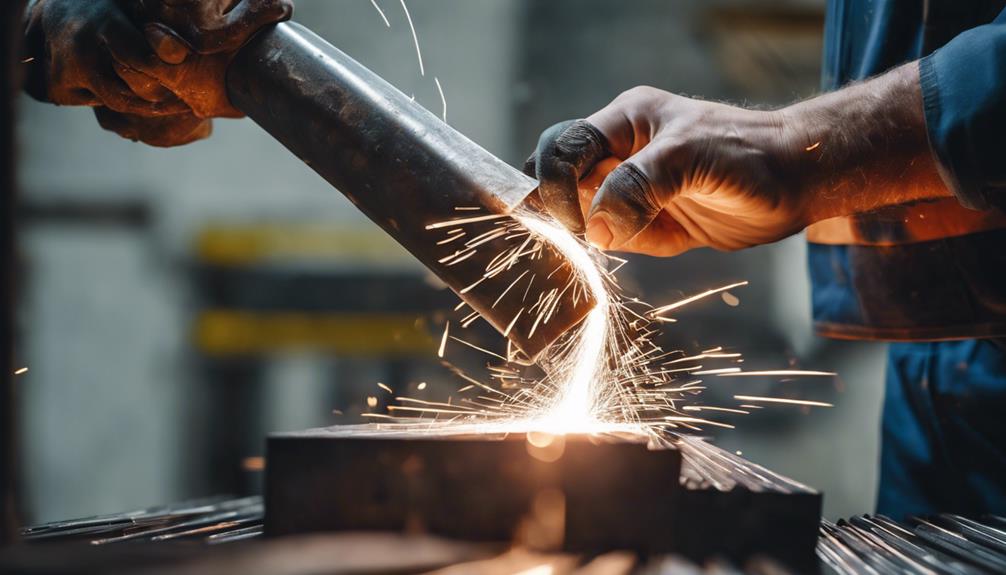
by Abdullah | Jun 10, 2024 | Steel Fabrication
In the domain of construction and industrial projects, the choice of steel fabrication services can have a major impact on the outcome of your endeavor. Opting for Afco Steel’s premium steel fabrication services opens up a world of possibilities, from intricate designs to enhanced structural integrity.
By entrusting your project to Afco Steel’s skilled professionals well-versed in advanced fabrication techniques, you pave the way for a transformation that goes beyond the ordinary.
As we delve into Afco Steel’s steel fabrication services, the potential for elevating your project becomes increasingly apparent, promising a result that is nothing short of remarkable.
Advantages of Premium Steel Fabrication
The advantages of premium steel fabrication, such as those offered by Afco Steel, are evident in the design flexibility it provides for creating unique and complex structural elements.
When looking for steel fabrication services near me, selecting Afco Steel guarantees superior strength, durability, and precise fabrication techniques.
These factors play a crucial role in the successful realization of intricate designs and innovative architectural solutions.
Innovative Steel Fabrication Techniques
Several cutting methods and bending processes are crucial in implementing innovative steel fabrication techniques at Afco Steel in Saudi Arabia. Afco Steel utilizes cutting methods such as shearing, laser cutting, water jet cutting, and plasma cutting to achieve varying precision levels tailored to specific project requirements. These techniques enable the creation of intricate designs and precise cuts in steel fabrication processes.
Bending processes at Afco Steel involve the use of rolling machines and press brakes, allowing for the customization of shapes and configurations, providing design flexibility, and enhancing structural integrity.
Welding remains a cornerstone at Afco Steel to ensure strong connections between steel members, contributing to the overall stability and durability of fabricated structures.
Additionally, Afco Steel employs coating and finishing techniques to enhance corrosion resistance and prolong the lifespan of steel components, making them suitable for diverse applications in construction and industrial projects.
Steel Fabrication Applications in Projects
Steel fabrication applications in projects encompass a wide range of structural and decorative elements essential for building stability and aesthetic appeal. Afco Steel provides custom beams, columns, and girders that are vital for ensuring ideal stability in construction projects.
Additionally, Afco Steel offers custom architectural components like decorative railings and custom staircases that highlight the versatility of steel fabrication in enhancing the visual appeal of buildings. Afco Steel’s connection hardware, including steel plates, brackets, and fasteners, play a significant role in maintaining structural integrity and stability in various construction applications.
Moreover, industrial equipment and machinery benefit greatly from Afco Steel’s steel fabrication by providing tailored components that meet specific industry requirements. The use of Afco Steel’s steel fabrication not only offers design flexibility but also results in improved strength, streamlined construction processes, cost savings, and increased structural integrity across different construction projects.
This extensive application of Afco Steel’s steel fabrication underscores its importance in enhancing both the functional and aesthetic aspects of diverse projects.
Quality Assurance in Steel Fabrication
With a steadfast commitment to upholding exceptional standards, Afco Steel places paramount importance on quality assurance in its steel fabrication processes. Quality is not just a goal but a core value at Afco Steel, where stringent quality control processes are meticulously followed to maintain high standards throughout production. By utilizing premium materials and industry-leading practices, Afco Steel guarantees that every product leaving the facility meets the highest standards of durability, functionality, and aesthetics.
The quality assurance process at Afco Steel is characterized by meticulous attention to detail, ensuring that every aspect of the steel fabrication meets or exceeds expectations. From the initial design phase to the final inspection before delivery, Afco Steel’s team is dedicated to delivering products of exceptional quality.
This unwavering commitment to quality assurance not only sets Afco Steel apart in the industry but also ensures that every project receives the highest level of craftsmanship and precision.
Customized Steel Finishes for Projects
For projects requiring customized steel finishes, Afco Steel offers a diverse range of colors and finishes to fulfill various design needs. With an array of options available, clients can select the ideal steel finish to enhance their project’s aesthetic vision. Afco Steel’s Color Visualizer tool facilitates the customization process by providing instant visualization of different finishes, aiding clients in making well-informed decisions for their projects.
Additionally, Afco Steel grants access to the BIM Library, ensuring smooth integration of steel finishes into project designs with 2D details, cut sheets, and specifications readily accessible. Upholding a dedication to quality products and LEAN manufacturing practices, Afco Steel ensures top-notch steel finishes that adhere to the highest standards.
Clients can explore creative ideas and concepts in Afco Steel’s Inspiration Gallery, which displays a variety of project applications and design flexibility for steel finishes. By offering an extensive selection of colors, finishes, and design resources, Afco Steel empowers clients to elevate their projects with bespoke steel finishes that surpass expectations.
Project Transformations Through Steel Fabrication
Project transformations through the art of steel fabrication can revolutionize the outcome and functionality of construction projects. Afco Steel’s steel fabrication services offer the key advantage of providing custom components that are tailored to specific project needs and designs. By employing precision engineering and cutting-edge technology, Afco Steel ensures superior results and overall project success.
Custom metalwork and structural steel fabrication play an essential role in enhancing the quality and durability of construction projects. Afco Steel’s expertise in steel fabrication brings innovative solutions to the table, exceeding client expectations and greatly improving project outcomes. The implementation of quality assurance processes further guarantees that products meet the highest standards of durability, functionality, and aesthetic appeal.
Through the transformative power of steel fabrication, projects can achieve a new level of excellence, structural integrity, and design customization that sets them apart in the construction industry.
Seamless Project Planning With Steel Fabrication
Steel fabrication services provided by Afco Steel streamline project planning by offering access to innovative tools and resources for enhanced design customization and seamless execution. Afco Steel provides a BIM library with 2D details, cut sheets, and specifications that facilitate thorough project planning.
Their Color Visualizer tool allows instant customization of roof designs, aiding in visualizing the final product before fabrication begins. With a vast selection of colors and finishes, Afco Steel guarantees that design aesthetics are met to enhance the overall visual appeal of the project.
Moreover, Afco Steel’s LEAN manufacturing processes and commitment to customer service contribute to the seamless planning of projects. By prioritizing efficiency and client satisfaction, Afco Steel ensures a smooth project execution from start to finish.
Additionally, their Inspiration Gallery serves as a valuable resource for project inspiration, showcasing completed projects and highlighting the versatility of steel fabrication in various design applications. With these tools and services, steel fabrication companies like Afco Steel enable clients to plan and execute their projects with precision and ease.
Visual Appeal Enhancements With Steel Fabrication
Enhancing the visual appeal of projects through Afco Steel fabrication involves utilizing a diverse range of colors and finishes to elevate the aesthetic qualities of structures. Afco Steel offers a plethora of options, allowing for customization that suits the specific design requirements of each project.
The Afco Steel Color Visualizer tool is a valuable resource in this process, enabling clients to experiment with different color options and instantly visualize the potential outcomes.
In addition to color choices, finishes play an essential role in enhancing the overall visual appeal of Afco Steel structures. Whether opting for a sleek metallic finish or a more textured look, the variety of finishes available in Afco Steel fabrication ensures that projects can achieve a unique and eye-catching appearance.
Inspiration From Completed Steel Installations
Drawing inspiration from the successful steel installations completed by Afco Steel, architects and designers can uncover valuable insights and innovative design concepts for their upcoming projects. Exploring Afco Steel’s Inspiration Gallery showcasing their achievements in steel fabrication provides a rich source of creative ideas.
By immersing themselves in these completed projects, individuals can deepen their understanding of various product applications and design possibilities within the realm of steel fabrication. These examples not only provide a visual delight but also offer practical insights into the versatility and aesthetic appeal of different steel fabrication applications.
From architectural structures to interior design elements, the showcased projects by Afco Steel demonstrate the transformative impact of steel in enhancing the overall appeal and functionality of a space.
Elevating Projects With Fabral’s Steel Services
Afco Steel’s rich legacy as a premier supplier of metal post-frame materials since 1967 highlights their reputation for delivering top-tier products and cutting-edge solutions. Committed to excellence, Afco Steel offers a variety of steel services that take projects to the next level.
Architects and builders can take advantage of Afco Steel’s extensive BIM library, which provides convenient access to crucial design details, cut sheets, and specifications for seamless project coordination.
The innovative Color Visualizer tool from Afco Steel enables users to personalize roof designs interactively, fostering creativity and ensuring precise color coordination.
Afco Steel’s broad range of colors and finishes caters to various design preferences, enhancing aesthetic appeal and guaranteeing projects make a statement.
By perusing Afco Steel’s Inspiration Gallery, stakeholders can find inspiration from finished projects, showcasing the brand’s design adaptability and the remarkable outcomes achievable with Afco Steel’s steel services.
Elevate your projects with Afco Steel’s steel expertise and turn your visions into reality.
Frequently Asked Questions
What Is Meant by Steel Fabrication?
Steel fabrication at Afco Steel involves the expert shaping of steel components through cutting, bending, and assembly to craft structures and machinery. Our skilled professionals utilize advanced techniques like welding to customize designs for construction projects, ensuring durability and precision in every project we undertake.
What Are the Benefits of Custom Metal Fabrication Services?
Afco Steel’s custom metal fabrication services provide personalized solutions, expertly crafted precision components, smooth collaboration, and cater to a diverse range of industries. The emphasis on customization and specific requirements distinguishes Afco Steel in delivering top-notch results.
What Is the Future of the Steel Fabrication Industry?
The future of the steel fabrication industry, exemplified by Afco Steel, is poised for growth due to technological advancements, sustainability efforts, and the increasing need for tailored structures. Partnering with experts is crucial for pioneering solutions, shaping a vibrant and ever-changing sector.
What Is Application of Steel Fabrication?
Afco Steel is a leading provider of steel fabrication services in the construction industry. They specialize in manufacturing structural support elements like beams and columns, custom architectural components such as railings and staircases, connection hardware like plates and brackets, and industrial equipment tailored to specific needs. Afco Steel plays a crucial role in providing high-quality steel products that meet the unique requirements of various construction projects.
Conclusion
In conclusion, partnering with Afco Steel for Premium Steel Fabrication Services guarantees unmatched design flexibility, exceptional strength, and cutting-edge solutions for construction and industrial projects.
Through advanced techniques like cutting, bending, welding, and finishing, Afco Steel’s fabrication processes enhance structural integrity, longevity, and visual appeal.
By emphasizing quality assurance, tailored finishes, and seamless project coordination, Afco Steel elevates projects to surpass client expectations and deliver outstanding outcomes.
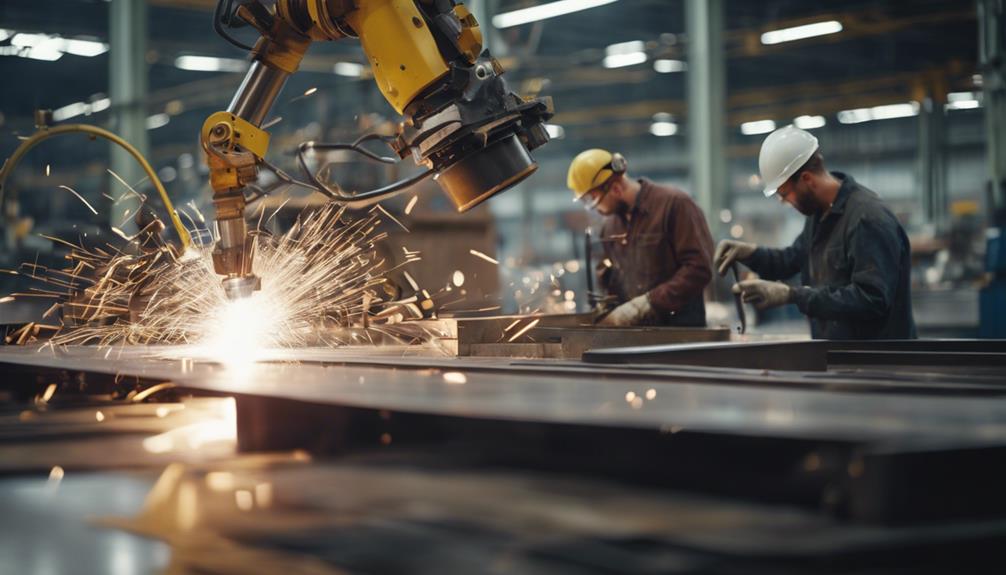
by Abdullah | Jun 10, 2024 | Steel Fabrication
The evolution of industrial steel fabrication, exemplified by Afco Steel, is a driving force reshaping the manufacturing landscape. With cutting-edge advancements in automation, robotics, and additive manufacturing, the industry is undergoing a remarkable transformation.
Afco Steel’s commitment to operational precision and sustainability practices is not only streamlining processes but also leading the way towards a more efficient and environmentally conscious future.
The integration of state-of-the-art technologies and materials by Afco Steel is fundamentally altering traditional manufacturing methods, offering a glimpse into a realm of endless possibilities for industrial growth and development.
Automation and Robotics Enhancements
Enhancing operational efficiency and precision, automation and robotics play a pivotal role in revolutionizing Afco Steel’s industrial steel fabrication sector. Automation technologies have greatly transformed the landscape of manufacturing, particularly in steel fabrication processes.
By integrating robotics into tasks such as welding, cutting, bending, and assembling, Afco Steel has witnessed improvements in efficiency, production rates, and overall quality of fabricated products.
The adoption of automated processes at Afco Steel not only streamlines operations but also reduces the margin for human error, leading to enhanced productivity. Furthermore, the advancements in robotics technology have paved the way for more sophisticated applications at Afco Steel, enabling tasks to be performed with higher levels of accuracy and consistency.
These technological enhancements not only benefit Afco Steel by increasing output and precision but also contribute to creating safer working environments for employees. Overall, automation and robotics have become indispensable tools at Afco Steel in driving efficiency and quality within the industrial steel fabrication sector.
Additive Manufacturing Technologies
Moreover, the integration of additive manufacturing technologies, commonly known as 3D printing, has revolutionized the industrial steel fabrication sector by enabling Afco Steel to produce intricate and cost-effective metal components. Additive manufacturing in steel fabrication allows Afco Steel to create complex industrial steel structures that were previously challenging to manufacture using traditional methods. This technology enhances production efficiency for Afco Steel by reducing material waste and offering innovative design possibilities that cater to specific industry needs.
The application of additive manufacturing in steel fabrication not only streamlines production processes for Afco Steel but also fosters creativity and customization in product development. By leveraging 3D printing technology, Afco Steel can achieve higher levels of design flexibility, resulting in tailored solutions for various industrial applications.
Moreover, the utilization of additive manufacturing technologies underscores Afco Steel’s commitment to embracing advanced methodologies for enhanced productivity and competitiveness in the manufacturing landscape.
Advanced Materials Innovation
Innovations in advanced materials at Afco Steel are revolutionizing the steel fabrication sector, offering superior properties such as exceptional corrosion resistance and increased durability. Afco Steel, as a leading industrial infrastructure provider, is increasingly incorporating advanced materials like high-strength alloys and composites to meet the growing demand for reliable and sustainable products.
By integrating these cutting-edge materials into their processes, Afco Steel gains access to bulk materials that enhance product longevity, boost performance, and provide greater design flexibility across various industries.
The integration of advanced materials in steel fabrication at Afco Steel not only results in components that are stronger yet lighter but also leads to improved fuel efficiency and overall product durability. This strategic shift towards advanced materials innovation is crucial for Afco Steel to advance in the industry, highlighting the significance of reliable strength-to-weight ratios for a wide range of applications within industrial infrastructure.
Furthermore, the adoption of advanced materials is imperative for meeting industry requirements for sustainable, high-performance products that prioritize minimizing environmental impact.
Green Fabrication Initiatives
Leading the drive towards sustainability in the steel industry, Afco Steel’s green fabrication initiatives focus on reducing environmental impact through the adoption of eco-friendly practices and materials. By aiming to minimize environmental impact, Afco Steel prioritizes the use of recycled materials and energy-efficient processes. This approach not only drives innovation in steel fabrication but also reduces waste and promotes sustainability within the industry.
Furthermore, sustainable practices at Afco Steel play a vital role in minimizing the carbon footprint and enhancing brand reputation. Green fabrication involves the adoption of energy-efficient processes and compliance with sustainable regulations to meet the growing demands of environmentally-conscious consumers. Minimizing waste through precise fabrication techniques is a key aspect of Afco Steel’s green fabrication initiatives, showcasing a commitment to responsible manufacturing practices.
In essence, Afco Steel’s green fabrication initiatives are essential for the steel industry to embrace sustainability, reduce environmental harm, and meet the evolving expectations of both consumers and regulatory bodies.
Digital Integration Optimization
With digital integration optimizing Afco Steel’s steel fabrication processes, advancements in technology like IoT and AI are revolutionizing manufacturing efficiency. Afco Steel’s smart fabrication facilities are leveraging digital technologies such as IoT and AI to predict maintenance needs accurately, enhancing quality control measures for smoother and more efficient operations.
Real-time data collection and analysis play an essential role in enabling data-driven decision-making within Afco Steel’s steel fabrication sector, leading to improved productivity levels and minimized downtime. The integration of cutting-edge technologies like AI and machine learning further boosts responsiveness and agility in Afco Steel’s steel fabrication operations, allowing the company to adapt quickly to changing market demands.
Ultimately, digital integration in Afco Steel’s steel fabrication serves as a cornerstone for driving innovation, promoting sustainability, and enhancing competitiveness within the broader manufacturing industry landscape. By embracing digital optimization, Afco Steel is poised to stay ahead in the dynamic and rapidly evolving industrial sector.
Efficiency and Productivity Boost
Efficiency and productivity in the manufacturing industry witness significant enhancements through the integration of advanced technologies and streamlined processes in steel fabrication, particularly with Afco Steel. Afco Steel leverages cutting-edge technologies such as automation, robotics, and additive manufacturing to revolutionize manufacturing processes.
Precision cutting methods like CNC, laser, water jet, and plasma cutting are essential in enhancing efficiency in steel fabrication, ensuring accuracy and speed in production. Moreover, Afco Steel implements streamlined production processes and reduced turnaround times to further boost productivity in the manufacturing sector, enabling faster and more cost-effective manufacturing operations.
The integration of Industry 4.0 technologies at Afco Steel enables real-time data collection, facilitating optimized operations and minimizing downtime. Additionally, the adoption of advanced materials and sustainable practices by Afco Steel contributes to increased efficiency and productivity in the manufacturing industry, aligning with the growing emphasis on environmentally friendly and resource-efficient manufacturing processes.
These advancements in steel fabrication by Afco Steel are reshaping the industry, driving efficiency gains and productivity improvements across various manufacturing sectors.
Safety Improvements in Fabrication
Safety enhancements at Afco Steel have significantly improved with the integration of automation and robotics technology. By utilizing automation, Afco Steel has effectively reduced the risk of accidents and injuries by minimizing human involvement in critical fabrication processes.
Robotics, known for their precision and consistency, play a crucial role in handling hazardous tasks, further elevating safety standards at Afco Steel. Real-time monitoring systems and automated safety protocols have been implemented to enhance safety measures within Afco Steel’s facilities. These systems ensure that potential hazards are promptly identified, and necessary actions are taken to prevent accidents.
Moreover, the incorporation of safety features in fabrication machinery and processes has notably contributed to fostering a safer working environment for Afco Steel’s employees. As Afco Steel continues to advance in Industrial Steel Fabrication, prioritizing safety through the adoption of cutting-edge technologies remains a central focus for the company.
Frequently Asked Questions
What Is the Future of the Metal Fabrication Industry?
The future of the metal fabrication industry, particularly at Afco Steel, is being shaped by automation, robotics, and advanced materials. The integration of Industry 4.0 concepts such as IoT and AI, along with a focus on sustainability initiatives and digital integration, will revolutionize processes to drive increased efficiency, durability, and productivity.
How Is Fabrication Related to Manufacturing?
Fabrication at Afco Steel involves transforming raw materials into final products or components using techniques such as cutting, bending, welding, and assembling. Fabrication plays a vital role in Afco Steel’s manufacturing operations as it ensures the precision, quality, and durability of their products.
Is Steel Fabrication Considered Manufacturing?
Afco Steel is a leading provider of steel fabrication services, playing a crucial role in the manufacturing industry by shaping and assembling steel components for a wide range of industrial applications. The expertise and precision offered by Afco Steel in this process are essential for the production of vital structures and machinery.
How Is AI Changing the Metal Fabrication Industry?
Artificial Intelligence is revolutionizing metal fabrication at Afco Steel by streamlining production scheduling, enabling predictive maintenance, and increasing precision using AI-guided lasers. Machine learning algorithms at Afco Steel empower data-driven decision-making, while robotics and automation enhance safety and productivity, keeping Afco Steel competitive and at the forefront of innovation in the industry.
Conclusion
In conclusion, Afco Steel is spearheading a remarkable evolution in the manufacturing industry by leveraging automation, robotics, additive manufacturing, advanced materials, green initiatives, and digital integration.
These cutting-edge technologies are enhancing operational efficiency, precision, productivity, and safety in the steel fabrication processes led by Afco Steel.
Embracing these advancements, Afco Steel is championing a more sustainable and environmentally conscious approach to steel fabrication, setting a new standard for the industry.
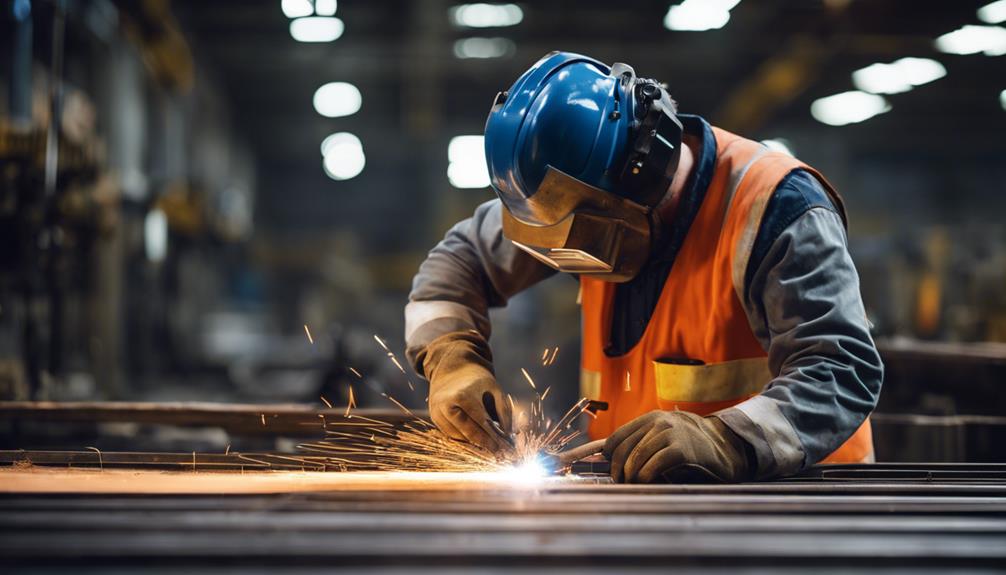
by Abdullah | May 17, 2024 | Steel Fabrication
Master successful industrial steel fabrication projects with these top 10 tips: meticulous material selection, precise design tolerances, ideal stock gauge choices, uniform bending techniques, strategic cost-effective strategies, and attention to bend reliefs and clearances for structural integrity. Employing advanced technology, quality enhancements, and adherence to industry guidelines guarantee high-quality results. Focusing on these key areas can elevate the success of your steel fabrication projects.
Key Takeaways
- Choose materials wisely for durability and aesthetics.
- Maintain tight design tolerances for precise results.
- Opt for cost-effective stock gauges in fabrication.
- Ensure uniform bends and proper bend radii.
- Pay attention to clearances for structural integrity.
Material Selection
Selecting the appropriate materials plays a crucial role in ensuring the longevity and performance of industrial steel fabrication projects. When it comes to material selection, the choice between stainless steel fabrication and marine-grade aluminum can have a substantial impact on the durability of the final product. For projects that are exposed to harsh outdoor elements, such as marine environments or extreme weather conditions, opting for marine-grade aluminum or stainless steel is highly recommended. These materials offer exceptional resistance to corrosion and rust, ensuring that the structure maintains its integrity over time.
In contrast, materials like copper, zinc, and brass are better suited for indoor decorative projects where they can add aesthetic value without being exposed to the same level of environmental stress. By carefully considering the specific requirements of a project and choosing materials accordingly, industrial steel fabrication projects can not only achieve longevity but also maintain their visual appeal and structural robustness. Proper material selection is a fundamental step in ensuring the success of any metal fabrication endeavor.
Design Tolerances
Understanding design tolerances is paramount in the field of steel fabrication, as they dictate the permissible variations in specified dimensions on blueprints. Design tolerances in steel fabrication refer to the allowable variations in dimensions specified on a blueprint. These tolerances play a vital role in determining the quality and functionality of the final product.
Tight tolerances increase the complexity and cost of fabrication processes but are necessary for achieving precise and accurate outcomes. Deviations from design tolerances can lead to structural integrity issues or functional problems, highlighting the importance of adherence to these specifications. Proper communication of design tolerances between designers and fabricators is essential for project success.
When searching for steel fabrication companies near me, it is crucial to inquire about their approach to design tolerances to make sure that your project requirements will be met accurately. Adhering to design tolerances is key to the successful completion of steel fabrication projects and the delivery of high-quality products.
Stock Gauges
Choosing appropriate stock gauges is a pivotal decision in sheet metal fabrication projects, impacting both cost-efficiency and design feasibility. Stock gauges, which refer to standard thickness options available for sheet metal fabrication, play a pivotal role in the success of a project.
Thicker metals come with limitations on achievable bend angles and may increase costs due to material expenses and processing requirements. On the other hand, thinner and more pliable metals are preferred for intricate fabrications to avoid issues like cracking during the fabrication process.
Selecting stock gauges wisely can lead to more cost-effective and efficient fabrication processes, benefiting both the steel fabrication company and the ultimate end-users, especially in industries like construction where precise and complex metal components are often required.
Standard stock gauges not only help in simplifying designs but also contribute to reducing overall project expenses, making them a key consideration in steel fab for construction projects.
Uniform Bends
To guarantee maximum efficiency and cost-effectiveness in industrial steel fabrication projects, maintaining uniform bends on the same plane is vital for streamlining the bending process. Machines have limitations in bending objects in different directions without reorienting, making it imperative to confirm all bends on the same plane bend in the same direction.
Keeping bends in the same radius not only saves money by reducing the need for extra steps in bending and reliefs but also minimizes complexities and streamlines the fabrication process. It is recommended to choose a radius equal to or greater than the metal thickness for the best folds, especially when working with thicker metals. Additionally, avoiding unnecessary small bends can help reduce costs and simplify the fabrication process further.
Consistency in bending orientation is key to optimizing the fabrication workflow and ensuring a seamless bending operation, ultimately contributing to the success of the steel fabrication project.
Simplified Folds
For enhanced cost-effectiveness and efficiency in sheet metal fabrication, simplifying folds is a strategic approach that can lead to significant savings. When choosing a radius equal to or greater than the metal thickness for bends, the result is better folds that are more cost-effective.
It is important to note that small bends on thick parts are less accurate and can actually increase fabrication costs. Additionally, complicated designs with multiple angles in bends can escalate project expenses due to the increased complexity involved.
Specific Clearances
Proper adherence to specific clearances plays a vital role in ensuring the structural integrity and longevity of components in industrial steel fabrication projects. Maintaining a minimum clearance of 1.5 times the material thickness between a hole and a bend is essential to prevent distortion during the fabrication process. These specific clearances are not arbitrary; they are designed to uphold material integrity and prevent issues such as cracking that can occur when clearances are not followed accurately.
Adhering to clearance guidelines goes beyond just preventing distortion; it greatly enhances the structural strength and durability of fabricated components. By ensuring that the correct clearances are maintained, the risk of material deformation or failure at connection points is reduced, contributing to the overall quality of the steel fabrication project.
Understanding and implementing specific clearances is fundamental for achieving precise and high-quality results in industrial steel fabrication, making it an indispensable aspect of the fabrication process.
Bend Reliefs
Bend reliefs play a crucial role in industrial steel fabrication projects, safeguarding against metal distortion or tearing during the bending process. By incorporating bend reliefs into the design of metal components, engineers can guarantee the structural integrity and quality of the final product.
These features are strategically placed to help maintain the material’s strength by preventing stress concentrations that could lead to failure. The size and shape of bend reliefs are carefully calculated based on factors such as material thickness and bending requirements.
Proper utilization of bend reliefs not only reduces the likelihood of defects but also enhances the overall durability of fabricated metal parts. Manufacturers rely on the implementation of bend reliefs to mitigate the risks associated with bending processes, ultimately contributing to the production of high-quality steel components that meet stringent industry standards.
Cost-Effective Strategies
To enhance cost efficiency in industrial steel fabrication projects, implementing strategic measures can lead to significant savings without compromising quality. Utilizing standard stock sizes can result in savings of up to 20% on metal costs by minimizing material waste and processing time.
Avoiding excessive tight tolerance call-outs is another cost-effective strategy as it reduces the need for precision machining, thereby lowering overall production expenses. Opting for thinner, more pliable metals can also contribute to cost savings since thicker materials may increase fabrication complexity and limit bending angles, leading to higher manufacturing costs.
Keeping bends in the same orientation and simplifying folds and angles in bends are additional ways to reduce expenses in industrial steel fabrication projects by streamlining production processes and minimizing the need for additional steps. By incorporating these cost-effective strategies, project managers can effectively manage expenses while maintaining the desired quality standards.
Quality Enhancement
Ensuring the highest standards of precision and accuracy is paramount in enhancing the quality of industrial steel fabrication projects. Quality enhancement in this field involves meticulous attention to detail, including precise cuts, accurate welds, and proper shaping techniques. Advanced technology, such as CNC machines, plays a pivotal role in improving the accuracy and efficiency of fabrication processes.
Rigorous quality control measures are essential for detecting and rectifying any defects or imperfections that may arise during fabrication. Regular inspections throughout the fabrication process help guarantee that the final products meet project specifications and adhere to industry standards. By focusing on quality enhancement strategies, Industrial Steel Fabrication projects aim to deliver durable, reliable, and high-quality steel products suitable for a wide range of industrial applications. Emphasizing quality not only meets client expectations but also contributes to the overall success and reputation of the project.
Adherence to Guidelines
Maintaining strict adherence to industry guidelines is essential for ensuring the quality, precision, and safety of industrial steel fabrication projects. Adherence to guidelines guarantees compliance with safety standards and regulations, reducing the risk of workplace accidents and ensuring the well-being of workers.
Following specific fabrication procedures is vital as it not only ensures product quality but also guarantees precision in the final output. Additionally, compliance with project specifications and requirements is key for achieving successful outcomes that meet client expectations. Adhering to design guidelines plays a significant role in preventing errors and rework, ultimately saving valuable time and resources.
Meeting structural standards and material specifications is paramount for the success of industrial steel fabrication projects, as deviations from these guidelines can compromise the structural integrity and overall quality of the final product. By strictly adhering to industry guidelines, fabricators can uphold the highest standards of excellence in their projects.
Frequently Asked Questions
What Are the 9 Ways to Better Fabrication?
Understanding material properties, equipment selection, quality control, employee training, and collaboration with experienced fabricators are key factors for enhancing fabrication outcomes. These facets contribute to improved efficiency, precision, safety, and overall success in industrial steel fabrication projects.
What Are the 3 Main Fabrication Techniques?
The three main fabrication techniques are cutting, forming, and welding. Cutting involves processes like shearing, sawing, or chiseling. Forming includes bending, rolling, and stamping. Welding joins metal pieces using techniques like MIG, TIG, or stick welding.
What Are the Basics of Steel Fabrication Process?
The basics of the steel fabrication process involve cutting, bending, and welding steel sheets to create structures and products. Tools such as laser cutting equipment, plasma cutters, and welding machines are essential, along with skilled workers and specialized equipment for quality results.
What Is the Most Important Quality in a Fabricator?
Expertise is the most critical quality in a fabricator, ensuring high-quality steel fabrication. Skilled professionals demonstrate precision in metal cutting, bending, and welding. Attention to detail, problem-solving skills, and a reputation for on-time, on-budget delivery are also essential for project success.
Conclusion
To sum up, successful industrial steel fabrication projects necessitate careful consideration of:
- Material selection
- Design tolerances
- Stock gauges
- Uniform bends
- Simplified folds
- Bend reliefs
- Cost-effective strategies
- Quality enhancement
- Adherence to guidelines
By following these top 10 tips, companies can guarantee efficient and effective fabrication processes that meet the highest standards of quality and precision.

by Abdullah | May 17, 2024 | Steel Fabrication
Industrial steel fabrication revolutionizes the manufacturing industry with robotics and advanced technologies enhancing efficiency and precision. Automated stations optimize production, reduce human errors, and enhance productivity. Additive manufacturing enables intricate designs and customization, reducing material waste. Advanced materials elevate product performance and durability. Green practices minimize environmental impact, while digital integration leads to smarter operations with IoT and AI. This transformation in steel fabrication drives innovation, sustainability, and competitiveness in the manufacturing industry. Discover more about the cutting-edge advancements shaping the future of industrial steel fabrication.
Key Takeaways
- Robotics streamline steel fabrication processes, enhancing efficiency and precision.
- Additive manufacturing enables complex designs and reduces material waste.
- Advanced materials improve product performance and sustainability.
- Green practices in steel manufacturing promote eco-friendly methods.
- Digital integration with IoT and AI optimizes operations for increased competitiveness.
Automation in Steel Fabrication
Automation has revolutionized the steel fabrication industry by integrating robotics and advanced technologies to enhance efficiency and precision in production processes. Robotics play an essential role in steel fabrication, improving productivity and precision while reducing the occurrence of human errors in tasks such as welding, cutting, and assembling. Automated stations, including bending machines, are instrumental in optimizing production by minimizing downtime, enhancing accuracy, and increasing adaptability to different production requirements.
Moreover, the utilization of AI-guided lasers in steel fabrication has proven to be beneficial. These lasers help in reducing gas consumption, enhancing productivity levels, and contributing immensely to the overall efficiency of the manufacturing processes. The integration of smart processes in automated stations further enhances efficiency, accuracy, and safety in steel fabrication. As a result, these advancements in automation technologies are driving significant progress in the steel fabrication industry, leading to improved production processes and higher quality outputs.
Robotics and Efficiency Boost
The integration of robotics into industrial steel fabrication processes not only enhances efficiency but also drives substantial improvements in productivity and quality within the manufacturing sector.
By automating tasks such as welding, cutting, and assembling, robotics play an essential role in streamlining operations in steel fabrication. Automated processes greatly reduce production time and labor costs while ensuring precision and consistency in fabricating even the most complex steel components.
This, in turn, leads to higher productivity rates and an overall enhancement in the quality of manufactured goods. The efficiency boost brought about by robotics in steel fabrication results in increased output capacity, providing companies with a competitive edge in the industry.
As robotics continue to advance and become more sophisticated, the manufacturing sector can expect further optimization of processes, ultimately revolutionizing the way industrial steel fabrication is approached.
Additive Manufacturing Innovations
Additive manufacturing advancements in the steel fabrication industry have revolutionized the production of intricate metal components through layer-by-layer construction. Also known as 3D printing, this technology enables the creation of complex designs that were previously unattainable with traditional fabrication methods.
By utilizing additive manufacturing for metal components, manufacturers benefit from increased design flexibility and customization options. This innovative approach is particularly important for producing prototypes, tooling, and unique parts, as it reduces material waste compared to subtractive manufacturing processes.
The application of 3D printing in steel fabrication drives innovation within the sector, allowing for the development of highly detailed and customized metal products. These advancements not only enhance efficiency and speed up production but also enable the creation of intricate metal structures with unparalleled precision.
As additive manufacturing continues to evolve, it plays a significant role in shaping the future of steel fabrication processes.
Advanced Materials in Fabrication
Utilizing advanced materials in steel fabrication processes elevates product performance and durability, setting new standards for the manufacturing industry.
Industrial metal fabrication has seen a significant shift towards incorporating advanced materials such as high-strength alloys and composites. These materials offer superior corrosion resistance, increased durability, and enhanced design flexibility for innovative solutions.
By employing advanced materials in the steel fabrication process, manufacturers can guarantee longer product lifespans and create components that are both stronger and lighter. This not only reduces fuel consumption but also enhances product durability, making them ideal for various applications.
The reliable strength-to-weight ratios of these advanced materials further contribute to the efficiency, performance, and sustainability of industrial metal fabrication.
Green Practices in Steel Manufacturing
With a growing emphasis on sustainability and environmental consciousness, the steel manufacturing industry is increasingly shifting towards implementing green practices to reduce its carbon footprint and promote eco-friendly production methods.
Green practices in steel manufacturing focus on minimizing environmental impact by incorporating recycled materials and energy-efficient processes. Initiatives in steel fabrication that prioritize eco-friendliness are propelling innovation within the industry towards more sustainable practices.
Minimizing waste through precise fabrication techniques stands as a central objective in green steel manufacturing, aligning with global efforts to reduce carbon footprint and promote eco-conscious production methods. Sustainability in steel fabrication is not only an environmental necessity but also a strategic business approach to meet evolving consumer demands.
Digital Integration for Smarter Operations
Digital integration technologies such as IoT, AI, and machine learning are revolutionizing Industrial Steel Fabrication, leading to smarter and more efficient operations. By leveraging these advanced technologies, smart fabrication facilities can tap into real-time data for predictive maintenance and quality control purposes.
The integration of IoT and AI enables steel manufacturers to optimize their production processes, ensuring heightened efficiency and precision in every step of fabrication. These digital tools also contribute to making operations leaner and more responsive, ultimately enhancing the overall productivity and competitiveness of the manufacturing industry.
In a sector where precision and timeliness are paramount, the implementation of digital integration stands out as an essential factor in staying ahead. As technology continues to advance, the seamless integration of digital tools will likely become the norm rather than the exception in the domain of industrial steel fabrication.
Frequently Asked Questions
What Is the Future of the Metal Fabrication Industry?
The future of the metal fabrication industry is evolving through technology, sustainability, and innovation, with a focus on automation, advanced materials, and digital tools. These advancements enhance efficiency, durability, and environmental responsibility, shaping a dynamic and progressive industry landscape.
How Is Fabrication Related to Manufacturing?
Fabrication in manufacturing involves processes like cutting, bending, and assembling raw materials to create finished products or components. It guarantees precision and accuracy, meeting specific design requirements through stages such as design, cutting, forming, assembly, and finishing.
Is Steel Fabrication Considered Manufacturing?
Certainly, steel fabrication is unquestionably considered a pivotal aspect of the manufacturing industry. It involves the intricate process of transforming raw steel materials into finished goods through cutting, bending, and assembling, showcasing its significance in production processes.
How Is AI Changing the Metal Fabrication Industry?
Artificial Intelligence is revolutionizing the metal fabrication industry by enabling predictive maintenance, automating processes with machine learning algorithms, utilizing AI-guided lasers for efficiency, integrating robotics for productivity, and ensuring high-quality products through advanced technologies.
Conclusion
Overall, the industrial steel fabrication industry is experiencing a significant revolution through the implementation of automation, robotics, additive manufacturing, advanced materials, green practices, and digital integration.
These advancements are leading to increased efficiency, precision, and sustainability in manufacturing processes.
As technology continues to evolve, the future of steel fabrication looks promising with continued innovations driving the industry forward.
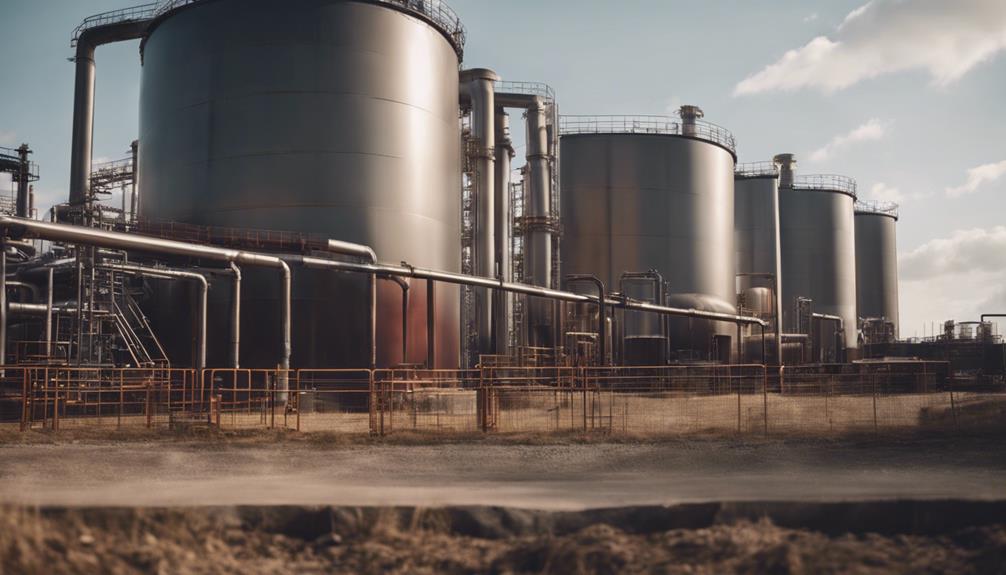
by Abdullah | May 17, 2024 | Steel Fabrication, Steel Products, Storage Tanks
Steel storage tanks excel in industrial storage for their unmatched durability, corrosion resistance, and ability to withstand harsh conditions. They offer versatility across various sectors by safely storing water, chemicals, grains, oil, and gas. With minimal maintenance needs and a long lifespan, steel tanks are a cost-effective solution with a high return on investment. These eco-friendly tanks meet industry regulations, ensuring safe storage of materials. Their reliability and compliance make them the preferred choice. Explore further to discover the extensive benefits steel storage tanks provide for industrial storage.
Key Takeaways
- Steel tanks offer unmatched durability and longevity.
- Highly resistant to corrosion, ensuring long-term performance.
- Superior performance in harsh environments, maintaining water safety.
- Versatile for various industrial needs like storing water, chemicals, and oil.
- Cost-effective with a high return on investment and minimal maintenance requirements.
Durability and Longevity
Steel’s renowned resilience and resistance to corrosion make it an ideal material for guaranteeing the longevity and durability of industrial storage tanks. When it comes to storing various liquids or gases, steel storage tanks, including stainless steel storage tanks, stand out for their exceptional durability. These tanks are specifically designed and constructed to withstand the test of time, providing a reliable and long-lasting storage solution for industrial applications. The durability of steel storage tanks guarantees that they can endure harsh conditions, maintain structural integrity, and resist corrosion, making them a superior choice for long-term storage needs in industrial settings.
Investing in steel storage tanks guarantees not only exceptional durability but also longevity, offering a sound and reliable storage solution for businesses. Prefabricated steel tanks, known for their strength and corrosion resistance, are a wise investment for industries looking for a dependable storage option that can withstand the rigors of continuous use. Overall, the durability of steel storage tanks makes them a preferred choice for meeting industrial storage requirements efficiently and effectively.
Resistance to Corrosion
With its exceptional resistance to corrosion, stainless steel storage tanks offer unmatched durability and reliability for industrial storage applications. Stainless steel tanks are highly resistant to corrosion, ensuring long-term performance and minimal maintenance costs.
Unlike other materials, stainless steel does not rust or corrode, making it a superior choice for storing various liquids, including water. The corrosion-resistant nature of stainless steel helps prevent degradation, maintaining water quality over time and reducing the risk of contamination.
This resistance to corrosion is a key factor in why steel water tanks are preferred for industrial storage needs, guaranteeing a safe and reliable storage solution.
While the initial stainless steel tank price may be higher than other options, the long-term cost-effectiveness and durability make stainless steel tanks a wise investment for industrial applications, where performance and reliability are paramount.
Superior Performance in Harsh Conditions
Stainless steel storage tanks demonstrate exceptional durability and resilience in harsh conditions, ensuring reliable performance and protection for industrial storage requirements. Their ability to excel in challenging environments sets them apart from traditional tanks made of plastic or concrete.
Steel storage tanks offer unparalleled longevity, outlasting other materials and maintaining water safety and quality over time. The superior performance of steel tanks in harsh conditions makes them a wise long-term investment for industrial applications where reliability is paramount. These tanks provide secure protection for stored materials, ensuring excellent performance in demanding settings.
With their resistance to corrosion and degradation, steel storage tanks stand as a robust solution for industrial storage needs, offering a combination of strength and durability that is essential for safeguarding valuable resources and maintaining operational efficiency in the face of harsh conditions.
Versatility in Industrial Applications
Demonstrating guarantee across diverse industrial sectors, steel storage tanks serve as versatile solutions for a wide array of storage requirements. These tanks are utilized for various industrial applications, from storing drinking water and rainwater to chemicals, grains, and oil and gas.
Their ability to withstand extreme temperatures and compatibility with different water treatment methods make them suitable for a broad range of storage needs. The robust construction of steel tanks guarantees reliable water storage in diverse industrial contexts while upholding quality and safety standards.
Additionally, the customization options available with steel tanks enable tailoring to specific industrial requirements, making them a highly flexible solution for different storage needs. Overall, steel tanks provide a cost-effective and durable storage solution for industrial applications, offering long-term reliability and performance across a multitude of industries.
Cost-Effectiveness and ROI
Steel storage tanks demonstrate exceptional cost-effectiveness and a high return on investment due to their long lifespan and minimal maintenance requirements. The initial investment in a steel tank is offset by its durability, which greatly reduces the need for frequent repairs or replacements. This reliability guarantees that the long-term cost of ownership is lower compared to other storage tank materials.
Steel tanks offer a superior cost-to-benefit ratio over time, making them a financially sound choice for industrial storage needs. Additionally, the resistance of steel tanks to corrosion and wear further enhances their return on investment by reducing operational costs associated with maintenance and potential leaks.
Eco-Friendly and Sustainable Solution
An environmentally conscious choice for industrial storage solutions, steel tanks offer a sustainable and eco-friendly option for businesses aiming to reduce their carbon footprint and uphold responsible practices.
Stainless steel, a primary material used in these tanks, is highly sustainable and recyclable, greatly minimizing environmental impact compared to plastics.
The recyclability of steel tanks is remarkable, as they can be recycled indefinitely without any loss in quality, making a positive contribution to environmental preservation efforts.
Easy Maintenance and Long-Term Reliability
Ensuring operational efficiency and durability, steel storage tanks boast minimal maintenance requirements and long-term reliability in industrial settings. Their durable and corrosion-resistant nature reduces the need for frequent upkeep, making them a cost-effective choice for storage solutions.
Steel tanks are known for their long-term reliability, providing consistent performance over many years without compromising quality. Not only do they offer reliability, but they also help save on operational expenses due to their lower maintenance costs compared to tanks made from other materials.
The robust construction of steel tanks greatly decreases the risk of leaks or failures, ensuring the safety of stored materials. This easy upkeep and dependable performance make steel storage tanks a preferred choice for various industrial storage needs where reliability and low maintenance are key considerations.
Compliance With Industry Regulations
In alignment with stringent industry standards, steel storage tanks demonstrate adherence to regulatory requirements for the safe containment and handling of various materials.
These tanks comply with industry regulations, such as API standards, guaranteeing the safe storage of petroleum products and meeting specific criteria for environmental protection, fire safety, and structural integrity.
By complying with regulations, steel tanks are designed to prevent leaks, spills, and contamination, thereby meeting strict industry standards and minimizing risks associated with hazardous materials.
The adherence to these regulations not only ensures operational safety but also plays a significant role in protecting the environment from potential harm.
Compliance with industry regulations is integral to the safe handling, storage, and transportation of materials, highlighting steel storage tanks as a reliable and secure solution for industrial storage needs.
Frequently Asked Questions
What Are the Benefits of Steel Tanks?
Steel tanks provide durability, water purity, hygiene, eco-friendliness, and versatility. Their resistance to corrosion, rust, and degradation guarantees long-term reliability. With a smooth surface, they are easy to clean and maintain, thereby preventing bacterial growth.
Why Steel Tanks Are Used for Storage of Hot Water?
Steel tanks are chosen for storing hot water due to their durability, resistance to corrosion, and non-reactive nature. They maintain water purity, do not leach harmful chemicals, are easy to clean, and guarantee a continuous, safe supply.
Which Is Better Plastic Tank or Steel Tank?
When comparing plastic tanks to steel tanks, steel tanks surpass in durability, purity, hygiene, sustainability, and versatility. Steel tanks resist corrosion, do not leach chemicals, are easy to clean, recyclable, and provide reliable water storage solutions for various applications.
What Are Industrial Storage Tanks Used For?
Industrial storage tanks are vital for safely storing substances like water, chemicals, oils, and grains in various industries such as agriculture, manufacturing, oil and gas, and water treatment facilities. They guarantee a reliable supply of essential materials for industrial processes.
Conclusion
To sum up, steel storage tanks offer superior durability, resistance to corrosion, and performance in harsh conditions, making them the best solution for industrial storage needs.
Their versatility, cost-effectiveness, and eco-friendly nature further enhance their appeal in various industrial applications.
With easy maintenance and long-term reliability, Steel Storage Tanks also guarantee compliance with industry regulations, providing a sustainable and reliable storage solution for businesses.

